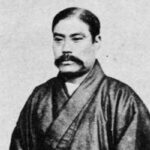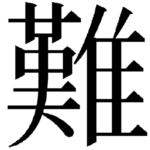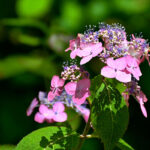As Japan inched closer toward ultra-nationalism during the war years, countless institutions —including rakugo — were affected. The playful wit and unpretentious humor that typically characterized the art form gave way to stories which glorified the feats of the Imperial Japanese forces. These tales, which were collectively called kokusaku rakugo (national policy rakugo), were penned by contemporary rakugo performers such as Hayashiya Shozo VII at the request of the military. Given rakugo’s mass appeal, the military seized the opportunity to capitalize on it and the rakugo community obliged.
This was also the time when rakugo performers in Tokyo were forced to refrain from performing 53 classical stories which had been labeled as kin-en rakugo (prohibited rakugo). Wartime censors shared a belief that rakugo stories about the pleasure quarters, alcohol, and mistresses, all of which were deemed demoralizing and degenerate, would weaken the fighting spirit of the people.
Although ken-etsu (censorship) had existed in Japan since the Edo period (1603-1867), censors exercised a particularly heavy hand during the war years from the Japanese invasion of Manchuria in 1931 to the end of World War II in 1945. Naturally, anything deemed detrimental to the war effort was banned and the ban was extended to include rakugo.
.

.
Rakugo which literally translates to “fallen words,” is a form of Japanese entertainment involving a lone storyteller. The rakugo artist conveys a story using only a paper fan and a small cloth as props, and his skills as a storyteller.
The censorship of these stories deeply impacted the storytellers who enjoyed telling them and relied on them as a means for earning a living. Then, a famous rakugo critic named Nomura Mumeian made an off-the-cuff suggestion that they erect a tomb for the banned stories on the grounds of Honpo-ji, a temple in Tokyo’s Asakusa district.
『Kristine’s Eye on Japan: Introduction to Japanese Culture』
Writer: Kristine Ohkubo
(2/1/2022)





I found the censorship of certain Rakugo stories during the war years educational. The more fascinating aspect of this article is that the 53 kin-en Rakugo stories received a burial site within Honpo-Ji as a ritual and testament to this period in history and in some ways a love by the Rakugo community.